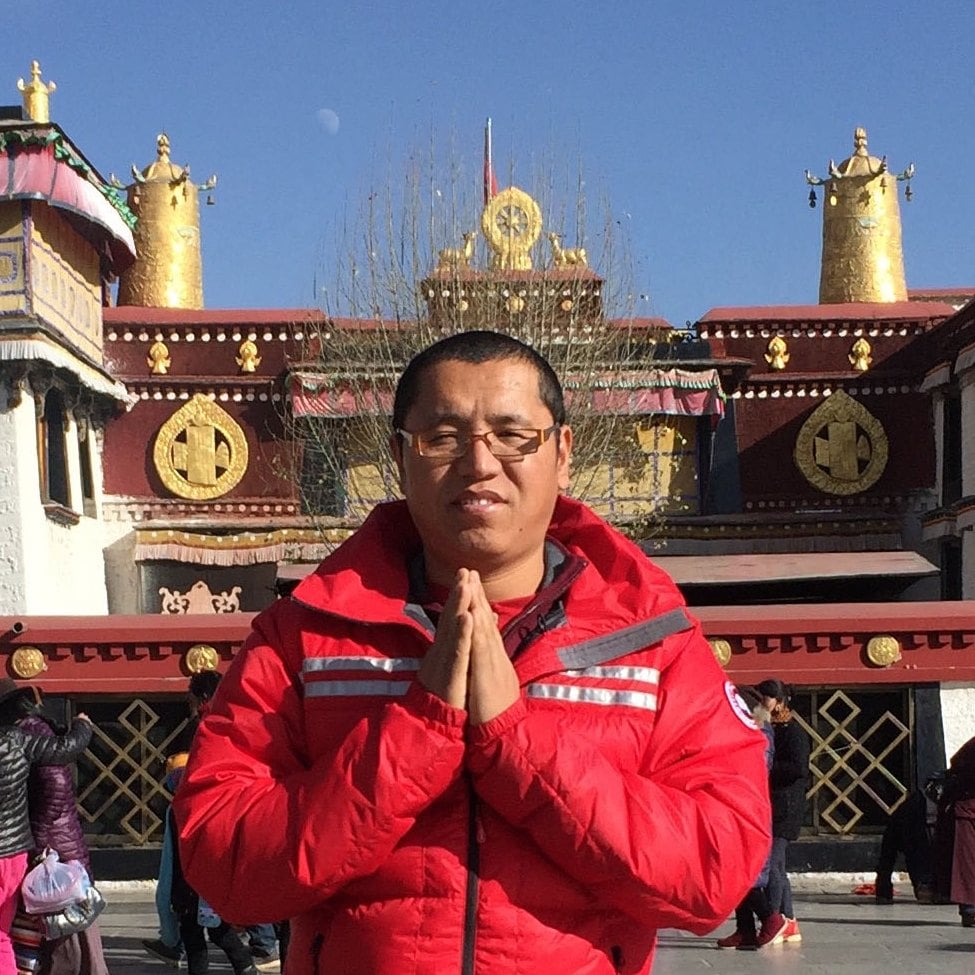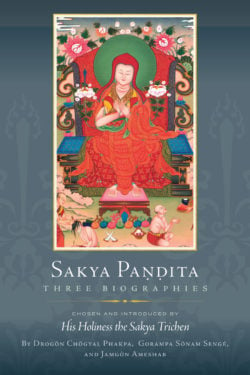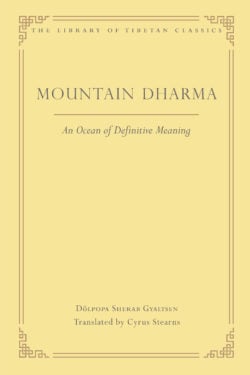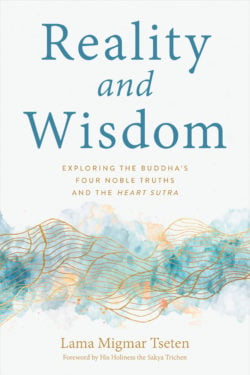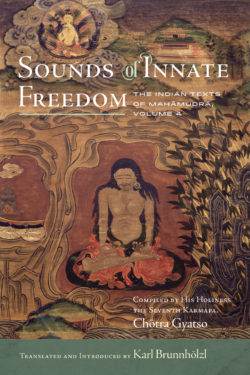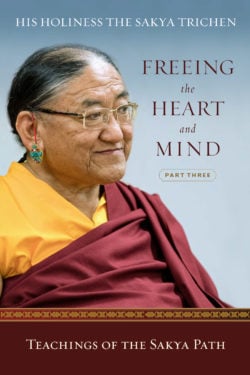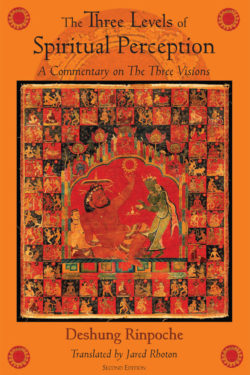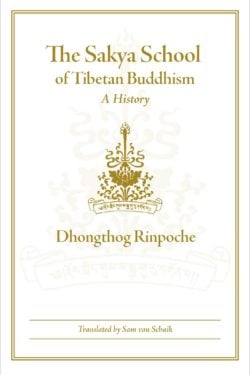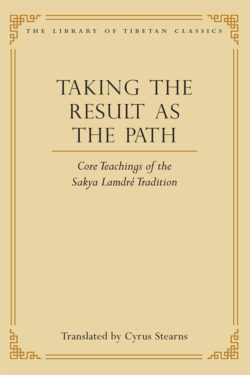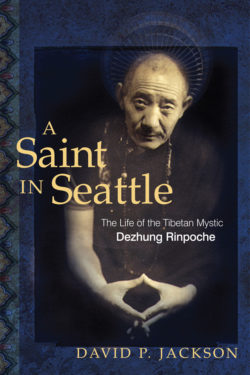
THE AMAZING TREASURY OF THE SAKYA LINEAGE
A lucid and landmark translation that offers an intriguing glimpse into Tibetan history, the Mongol Empire, and the spiritual development and remarkable lives of the early luminaries of the Sakya lineage of Tibetan Buddhism.
In this first of two volumes of The Amazing Treasury of the Sakya Lineage, translators Khenpo Kunga Sherab and Matthew King capture a truly remarkable period in Buddhist and Asian history. Here, Ameshab Ngakwang Kunga Sönam (1597–1659), a member of the Khön aristocracy and the twenty-seventh throne holder of Sakya Monastery, offers a narrative that recounts the lives of numerous iconic leaders of the Sakya school of Tibetan Buddhism during the transformational period between the tenth and fourteenth centuries. This landmark volume reconstructs that long era of religious and political innovation and upheaval through the rise of the Mongol Empire.
In this book, you’ll see how Sakya Buddhist leaders emerged in this early period as translators, adopters, arbiters, and innovators of newly circulating Indian Buddhist scholastic and tantric cultures. In the thirteenth century, when the Mongol Empire forever transformed medieval Eurasia, leaders of the Sakya school became confidants and tutors to some of its most powerful leaders. The biographies of numerous Sakya luminaries are retold here, like Sakya Paṇḍita and Phakpa Lodrö Gyaltsen; along with their Mongol contemporaries, Köten Ejen and Qubilai Qaγan, these leaders laid the groundwork for forms of patronage, religious and political sovereignty, scholasticism and tantrism, and righteous rule that would endure for the next eight centuries down to today.
- Hardcover
- 400 pages, 6 x 9 inches
- $65.95
- ISBN 9781614299196
- eBook
- 400 pages
- $49.99
- ISBN 9781614299332
Discover More
Sakya Paṇḍita
A set of classic biographies of Sakya Paṇḍita—one of Tibet’s greatest scholars and religious masters.
Sakya Paṇḍita Kunga Gyaltsen (1182–1251) was a renowned Tibetan polymath, scholar, statesman, and religious master, and one of the most famous and consequential figures in the history of Tibet. The three classic biographies included here contain fascinating firsthand accounts of key events in Sakya Paṇḍita’s life, covering his family ancestry, early education, interactions and debates with other sects, travels to Mongolia and his diplomacy at the Mongol court, and a detailed account of the miraculous events that occurred in the last weeks of his life.
Mountain Dharma
A brilliant annotated translation of Dölpopa Sherab Gyaltsen’s Mountain Dharma that opens a masterpiece of the Jonang tradition to Western readers and presents Dölpopa’s provocative ideas about a true, eternal, and established reality that still impact Buddhism today.
The controversial master Dölpopa Sherab Gyaltsen shook Buddhist Tibet when he taught that an eternal enlightened essence, or buddha nature, exists in full form in all living beings. The ideas discussed in Mountain Dharma are still as provocative as when Dölpopa first taught them, impacting Buddhism to this day. Dölpopa identified the ultimate with the buddha nature, or sugata essence, which he held to be eternal and not empty of self-nature. The buddha nature is perfect, with all its characteristics inherently present in all living beings. It is only the impermanent and temporary afflictions veiling the buddha nature that are empty of self-nature and must be removed through the practice of the path to allow it to manifest. Dölpopa establishes the validity of his theories with an ocean of quotations selected from Indian Buddhist scriptures and treatises of indisputable authority, showing us that the ultimate is a true, eternal, and established reality, empty merely of other relative phenomena.
Learn more about the Library of Tibetan Classics
Learn about becoming a benefactor of the Library of Tibetan Classics
The Fundamental Practices
A wise and warm guide to the preliminary practices that lay the fundamental groundwork for traversing the path to buddhahood.
When we start on the transformational journey to enlightenment, we need a strong foundation in core Buddhist principles and practices to set us on the right track. The ngöndro, or preliminary practices, are that very foundation; they not only prepare us for advanced practice but serve us in all we do. In this guide to the common and uncommon preliminary practices, His Holiness the Forty-Second Sakya Trizin, Ratna Vajra Rinpoche, expertly gives us the grounded, practical, and illuminating teachings we need to set out on the path to buddhahood. Newcomers and seasoned practitioners alike will find practical guidance and profound wisdom to support them through their exploration of the preliminary practices.
The common preliminary practices are the four thoughts that turn the mind away from the suffering of samsara and toward the Dharma: remembering the shortcomings of samsara, remembering the preciousness of a human rebirth, remembering impermanence, and remembering the law of karma. These teachings are shared among traditions and will accompany us all the way to buddhahood. The five uncommon preliminary practices are core to further Mahayana and Vajrayana practice: going for refuge in the Buddha, Dharma, and Sangha; developing bodhichitta, the enlightened mind; Vajrasattva practice, which clears negative karma; mandala offering, which will help us accumulate merit; and guru yoga, which facilitates our realization of the nature of mind.
By using this guide, we can develop a deeper understanding of what Dharma practice truly encompasses and how we can authentically engage in it. His Holiness the Forty-Second Sakya Trizin invites us to appreciate the profound significance of these preliminary practices and experience the transformative benefits they offer—for both ourselves and all sentient beings.
Reality and Wisdom
Written in a warm and accessible style by one of today’s most respected Tibetan Buddhist masters, Reality and Wisdom leads the reader on a journey of discovery beginning with the very first teachings of the Buddha and into the profound experience of emptiness.
The first section of the book explores the bedrock Buddhist teachings of the four noble truths—insights into freedom from suffering from craving—which underpin all schools of Buddhism. Lama Migmar presents and explores these foundational Buddhist truths with humor and insight, explaining how, from a Mahayana Buddhist perspective, these truths serve as crucial supports for cultivating the transformative wisdom of emptiness.
In the book’s second half, Lama Migmar illuminates the terse and enigmatic lines of the Heart Sutra, perhaps the most studied and revered of all Mahayana Buddhist scriptures. The Heart Sutra presents the reader with a vision of reality as it is perceived by a buddha, a vision underpinned by and infused with the radical flexibility and possibility of emptiness and the engagement and responsiveness of profound compassion.
The clarity, warmth, and vibrancy of Lama Migmar’s writing combined with the comprehensiveness and detail of his presentations of key Buddhist teachings make this book a valuable resource for a range of readers, from beginners to more advanced practitioners seeking to deepen their practice.
Light of Samantabhadra
A gateway to Indian philosophy and its explication in Tibet.
Among the many works produced in the rich philosophical tradition of India’s classical age, few have had more impact than Dharmakīrti’s Commentary on Valid Cognition (Pramāṇavārttika). Composed in India in the seventh century, it became the cornerstone for the study of logic and epistemology in the Tibetan Buddhist tradition.
This work translated here is by one of the premier scholars of the Sakya school, Gorampa Sönam Sengé (1429–89). It illuminates the first two chapters of Dharmakīrti’s work, those on using inference to enlighten oneself (svārthānumāna) and on establishing valid cognition (pramāṇasiddhi) both to determine the authority of the Buddha as a valid teacher and to eliminate the cognitive obstacles to awakening. The root text is composed in compact verses, and these are translated here along with Gorampa’s word-by-word commentary that reveals their often veiled meanings. These chapters explore key issues in the philosophy of language and the nature of conventional designation, the way to employ sound reasoning, the proof of past and future lives, and the way to eliminate the view of self. In the skilled hands of translator Gavin Kilty, these insights are made accessible.
Light of Samantabhadra is the first volume in a new academic series from Wisdom and the Khenpo Appey Foundation. The Khenpo Appey Collection of Sakya Classics aspires to fulfill Khenchen Appey Rinpoche’s vision of making important and authoritative Sakya works accessible to English-speaking audiences. This series, conceived by the Khenpo Appey Foundation and published by Wisdom Publications, will contain translations of texts central to Tibetan Buddhist study composed by influential Sakya masters to provide a holistic and comprehensive presentation of Buddhist thought and philosophy.
Sounds of Innate Freedom, Vol. 4
Sounds of Innate Freedom: The Indian Texts of Mahāmudrā are historic volumes containing many of the first English translations of classic mahamudra literature. The texts and songs in these volumes constitute the large compendium called The Indian Texts of the Mahāmudrā of Definitive Meaning, compiled by the Seventh Karmapa, Chötra Gyatso (1456–1539). The collection offers a brilliant window into the richness of the vast ocean of Indian mahamudra texts cherished in all Tibetan lineages, particularly in the Kagyü tradition, giving us a clear view of the sources of one of the world’s great contemplative traditions.
Besides the individual dohās (couplets), vajragītis (vajra songs), and caryāgītis (conduct songs) in this second volume in publication, the three extensive commentaries it contains brilliantly unravel enigmas and bring clarity not only to the specific songs they comment on but to many other, often cryptic, songs of realization in this collection. These expressive songs of the inexpressible offer readers a feast of profound and powerful pith instructions uttered by numerous male and female mahāsiddhas, yogis, and ḍākinīs, often in the context of ritual gaṇacakras and initially kept in their secret treasury. Displaying a vast range of themes, styles, and metaphors, they all point to the single true nature of the mind—mahāmudrā—in inspiring ways and from different angles, using a dazzling array of skillful means to penetrate the sole vital point of buddhahood being found nowhere but within our own mind. Reading and singing these songs of mystical wonder, bliss, and ecstatic freedom, and contemplating their meaning, will open doors to spiritual experience for us today just as it has for countless practitioners in the past.
Click here to explore other volumes available in The Sounds of Innate Freedom series.
The Play of Mahamudra
“This new collected edition of Khenpo Migmar Tseten’s Play of Mahamudra volumes constitutes a veritable treasure for all who are deeply engaged on the path to enlightenment. Khenpo Migmar’s translation of Mahasiddha Virupa’s Treasury of Dohas and of Sachen Kunga Nyingpo’s Praise to Virupa makes us intimately familiar with the essence of these root texts, and his elucidation of the Dohas offers us a deep and clear understanding of their core meaning. Anyone who truly contemplates on Mahasiddha Virupa’s words is certain to attain realization.”
—His Holiness the Sakya Trichen
In this collection, renowned Tibetan Buddhist teacher Lama Migmar Tseten provides essential commentary on the mystical songs of the Indian Buddhist rebel-saint Virupa. One of the most celebrated tantric masters of Buddhist India, Virupa’s songs describe his realization of mahamudra, the ultimate nature of reality. Intimate and highly engaging, The Play of Mahamudra unpacks these songs with meticulous clarity, making Virupa’s insights accessible to modern readers.
The Bodhisattva Path from Ground to Fruition
Discover profound teachings on the Buddhist path from His Holiness the 42nd Sakya Trizin Ratna Vajra, one of Tibetan Buddhism’s most prominent leaders.
His Holiness Ratna Vajra Rinpoche is one of Tibetan Buddhism’s most highly qualified teachers, having received all the major empowerments, transmissions, and teachings directly from his father, Gongma Trichen Rinpoche, the forty-first Sakya throne holder and one of the most senior teachers of the Sakya tradition. Following in the footsteps of his forefathers, His Holiness is renowned for the purity of his transmission, always taking great care to offer to his disciples the teachings as he faithfully received them. To the great fortune of his non-Tibetan-speaking students, His Holiness is also fluent in English, giving them a direct access to his teachings.
In this book, His Holiness offers profound commentary on Sakya Paṇḍita’s Clarifying the Sage’s Intent, one of Tibet’s most revered works on the bodhisattva path. Elucidating Sakya Paṇḍita’s teachings in exquisite detail, His Holiness describes the ground of Buddhist practice as the spiritual potential for liberation that is present in the hearts of all beings. He outlines the foundational practices of taking refuge and cultivating the resolve to become awakened, before detailing the six perfections, the levels of accomplishment of bodhisattvas, and the fruition of practice as a fully awakened buddha.
Freeing the Heart and Mind: Volume 3
Collected from teachings by His Holiness, this book is a warm and comprehensive introduction to the Buddhist path as told by the patriarch of the Sakya order. His Holiness offers explanations of the philosophical tenets of the Mahayana path and in particular the Sakya school of Tibetan Buddhism—giving down-to-earth advice for practicing in the world today, including
- the principles of tantra,
- the value of retreat,
- the history of the Sakya lineage,
- ecology from a Buddhist perspective,
- biographies of great women practitioners,
- and other fascinating topics.
This is a must-read for anyone interested in following a Buddhist spiritual path.
The Three Levels of Spiritual Perception
The Three Levels of Spiritual Perception is a revised edition of the classic guide to the Lamdre, a key system of meditation of the Sakya tradition of Tibetan Buddhism.
Written by one of the first Tibetan masters to live and teach in the United States, it is rendered in a lyrical style that entertains, inspires, and motivates the reader. A key work for all those who are eager to develop and deepen their meditation practice.
Learn more about Ngorchen Konchog Lhundrup at the Treasury of Lives.
The Sakya School of Tibetan Buddhism
Since its 1976 publication in Tibetan, Dhongthog Rinpoche’s history of the Sakya school of Tibetan Buddhism has been a key reference for specialists in Tibetan studies. Now English readers can consult it as well through Sam van Schaik’s authoritative, fully annotated and accessible translation.
The book begins by examining the development of Buddhism in India and Tibet, setting the scene for the Khon family’s establishment of the Sakya school in the eleventh century. Rinpoche subsequently provides accounts of the transmission of the Lamdre (the heart of Sakya contemplative practice and other major streams of esoteric instruction) and the Ngor and Tshar branches of the Sakya tradition. Highlights also include surveys of great Sakya and nonsectarian masters such as Rongtongpa, Gorampa, Jamyang Khyentse Wangpo, and Khyentse Chokyi Lodro. This traditional history, compiled both from earlier histories and from the author’s direct connection to masters of the tradition, is an enormously valuable resource for the study of Tibetan Buddhism.
Taking the Result as the Path
The tradition known as the Path with the Result, or Lamdré‚ is the most important tantric system of meditation practice and theory in the Sakya school of Tibetan Buddhism. This volume contains an unprecedented compilation of eleven vital works from different periods in the history of the Path with the Result in India and Tibet, including the Vajra Lines of the great Indian adept Virūpa (ca. seventh–eighth centuries), the basic text of the tradition. The collection also includes six writings by Jamyang Khyentsé Wangchuk (1524–68) and an instruction manual composed by the Fifth Dalai Lama (1617–62). None of the works in this book have ever been published before in any European language, and most of these writings traditionally have been considered secret. The present translation, an important new volume of the Library of Tibetan Classics, has been made with the personal approval and encouragement of His Holiness Sakya Trizin, head of the Sakya tradition. Students of the Lamdré will rejoice at the availability and lucidity of this major translation of key Sakya texts.
Learn more about the Library of Tibetan Classics
Learn about becoming a benefactor of the Library of Tibetan Classics
Learn more about the following masters at the Treasury of Lives:
A Saint in Seattle
In 1960, the Tibetan lama Dezhung Rinpoche (1906-87) arrived in Seattle after being forced into exile from his native land by the Communist Chinese. Already a revered master of the teachings of all Tibetan Buddhist schools, he would eventually become a teacher of some of Western Buddhism’s most notable scholars. This is the inspiring and unlikely biography of a modern buddha.


